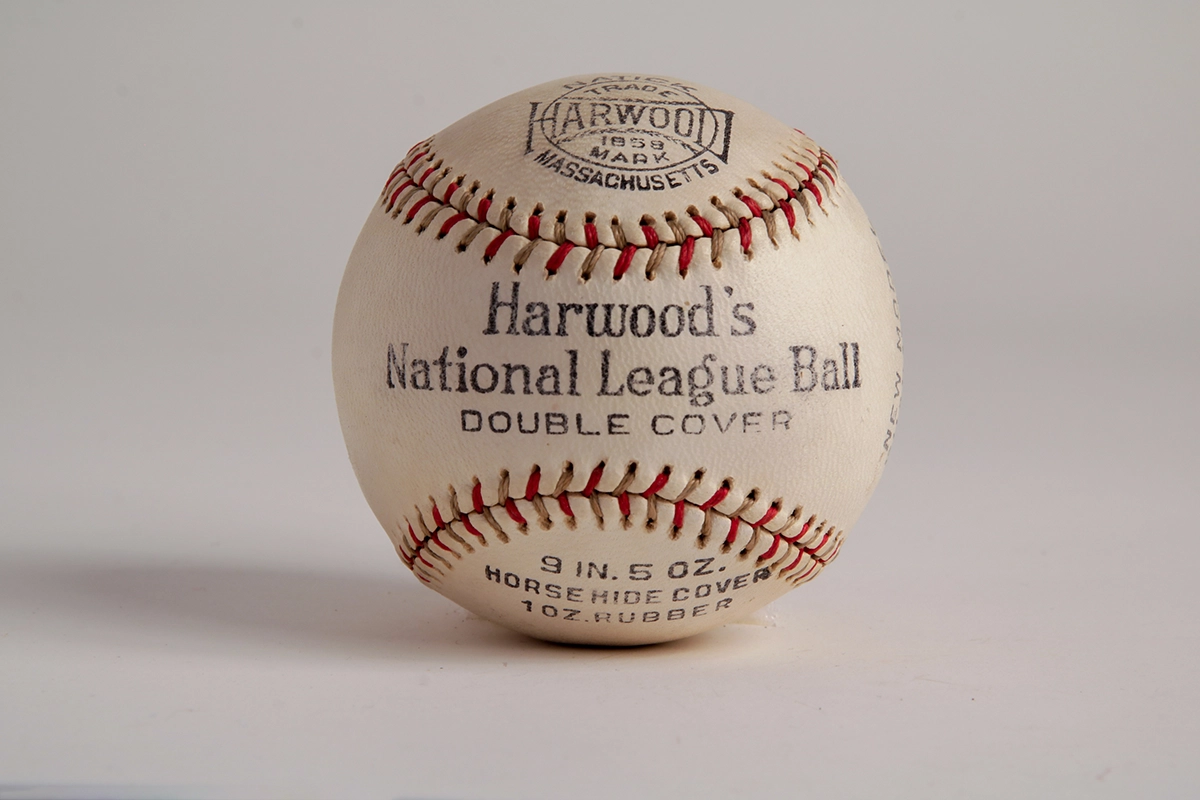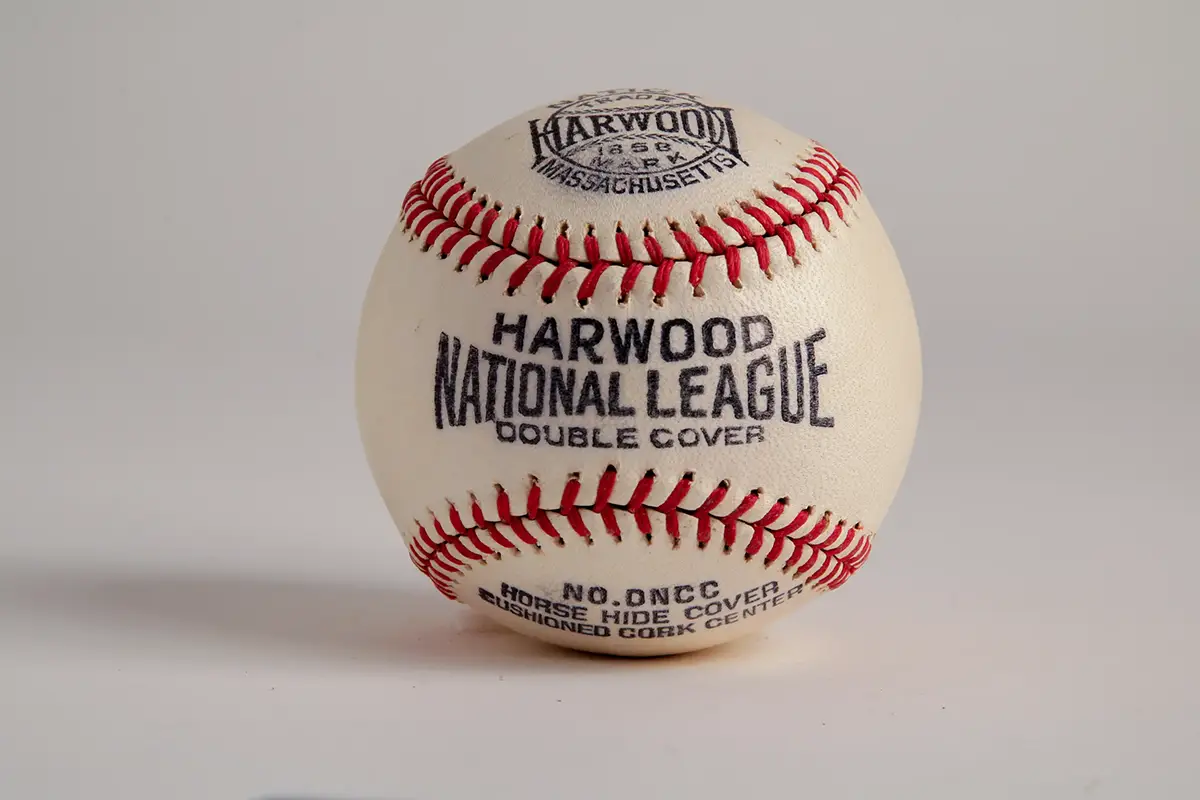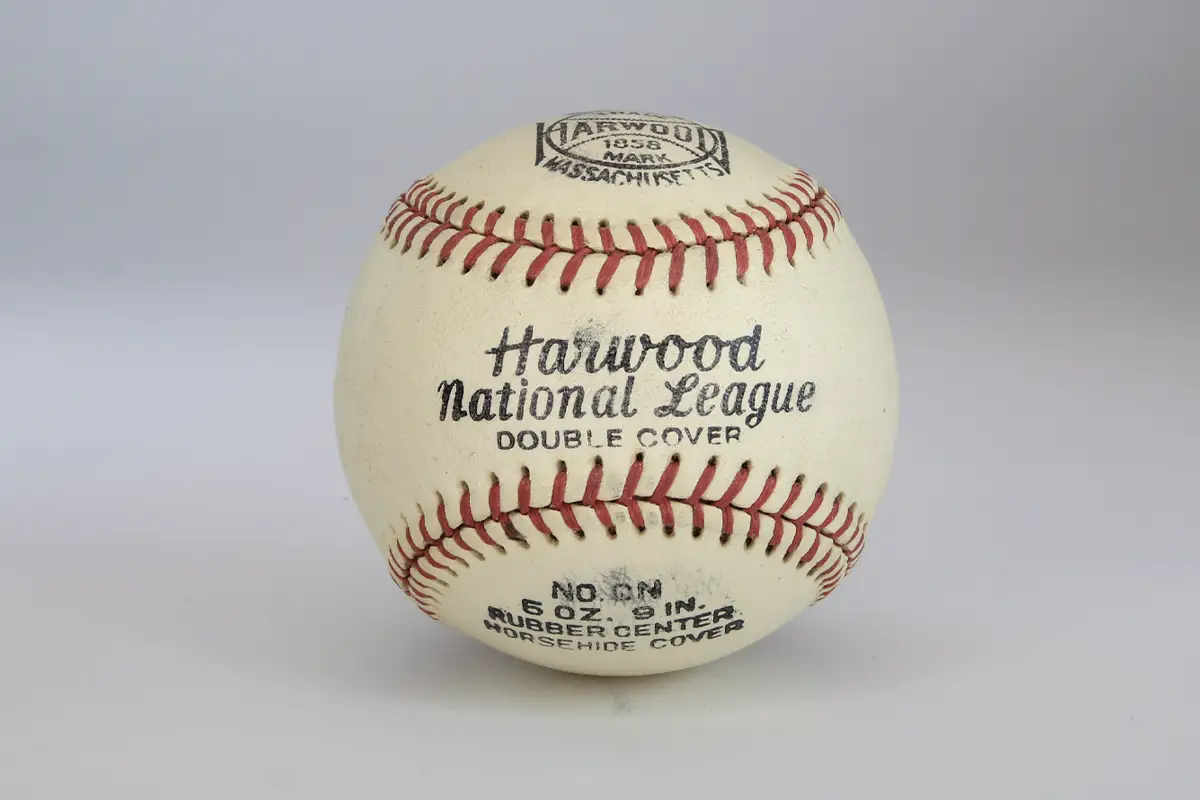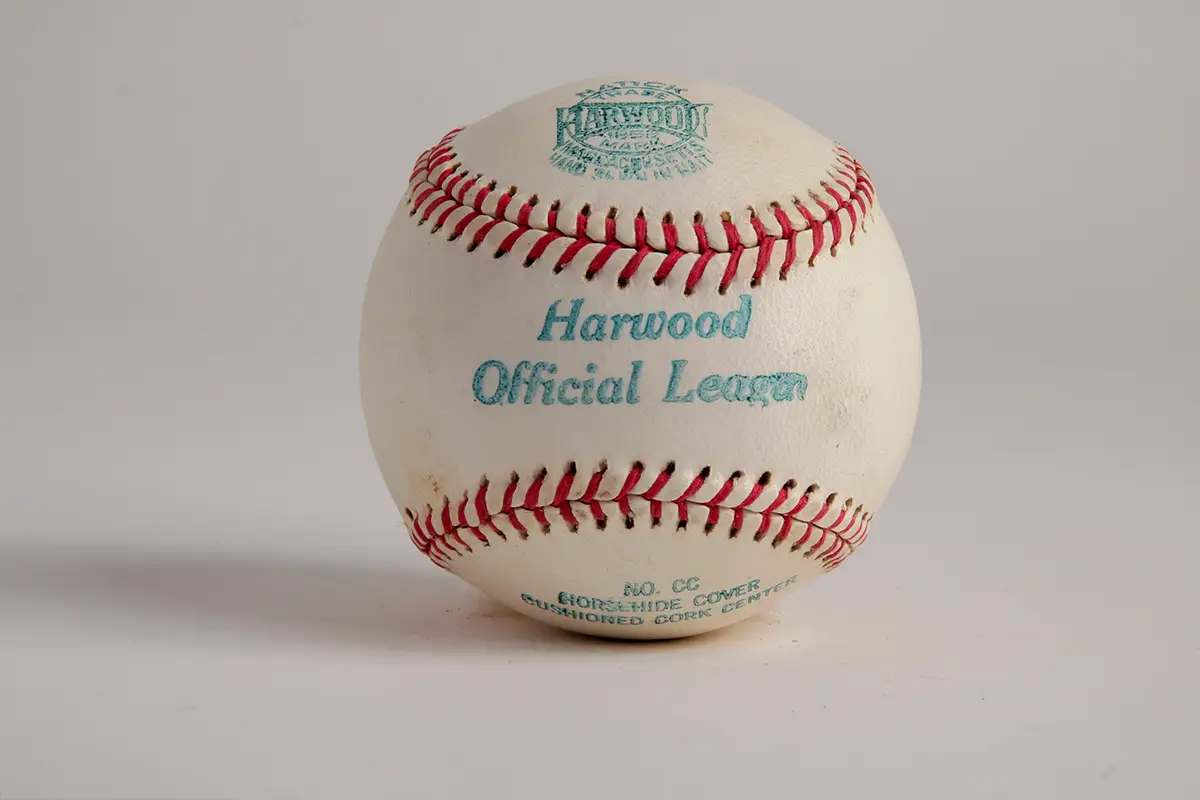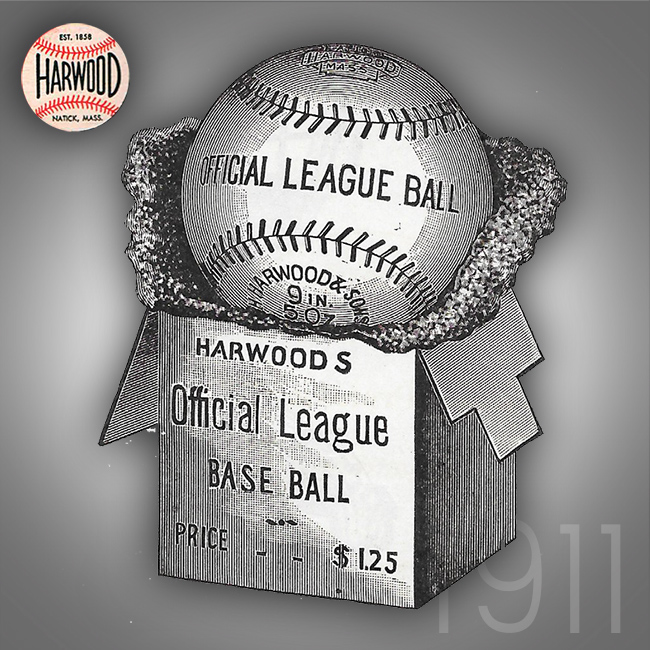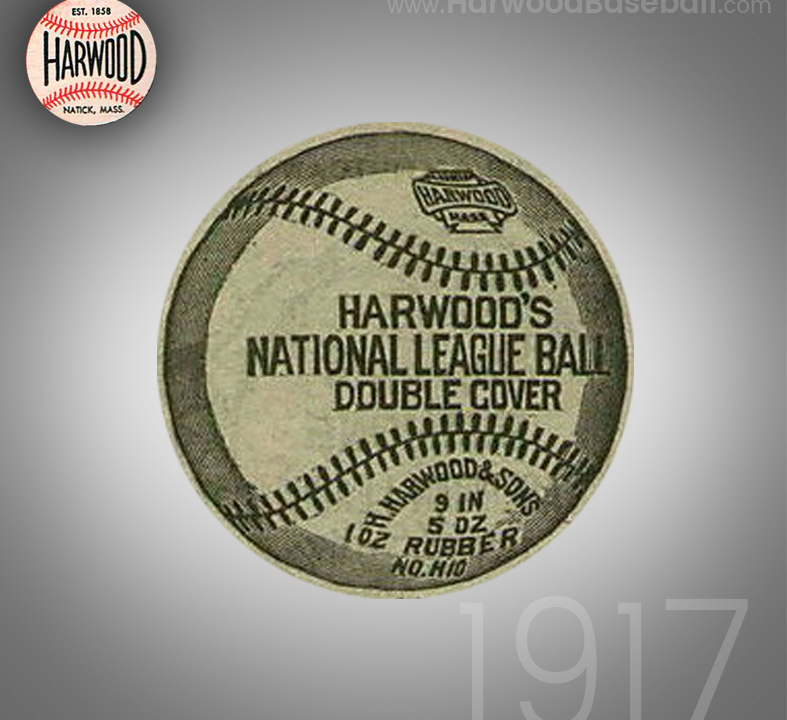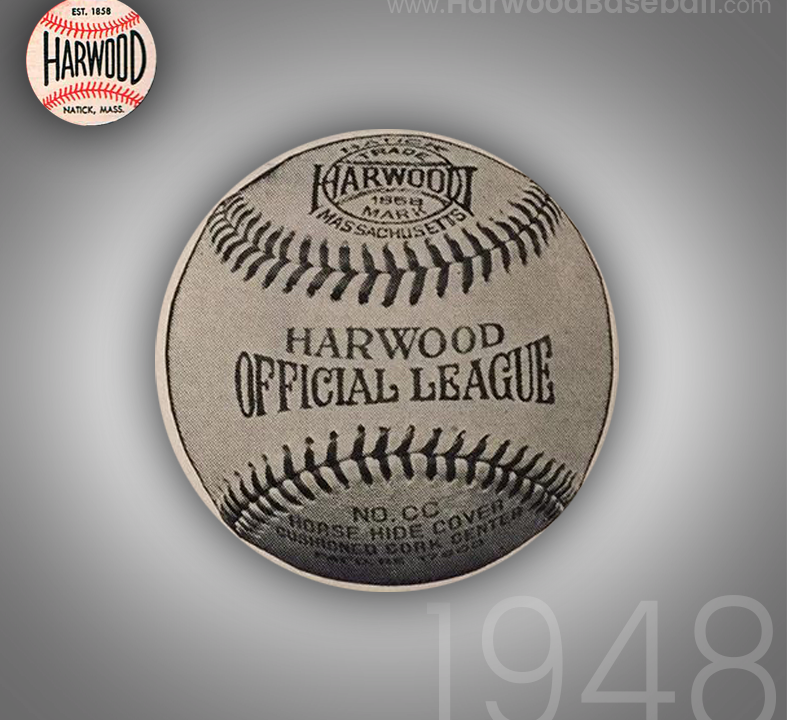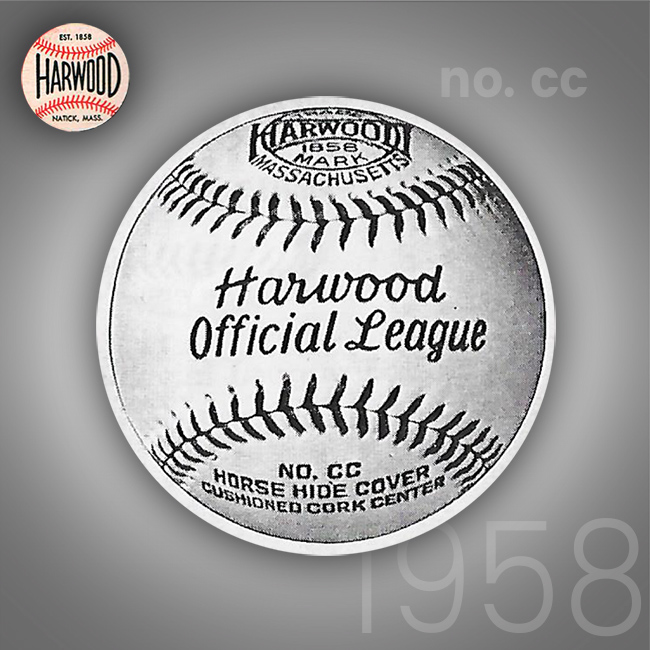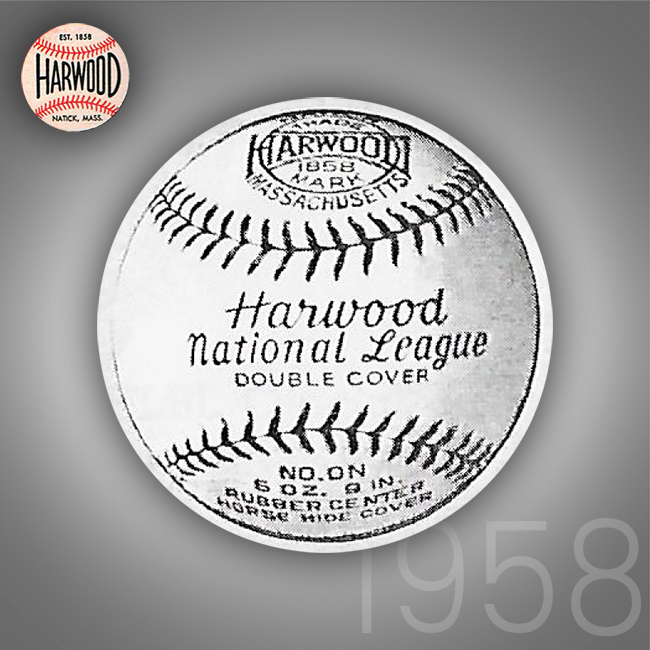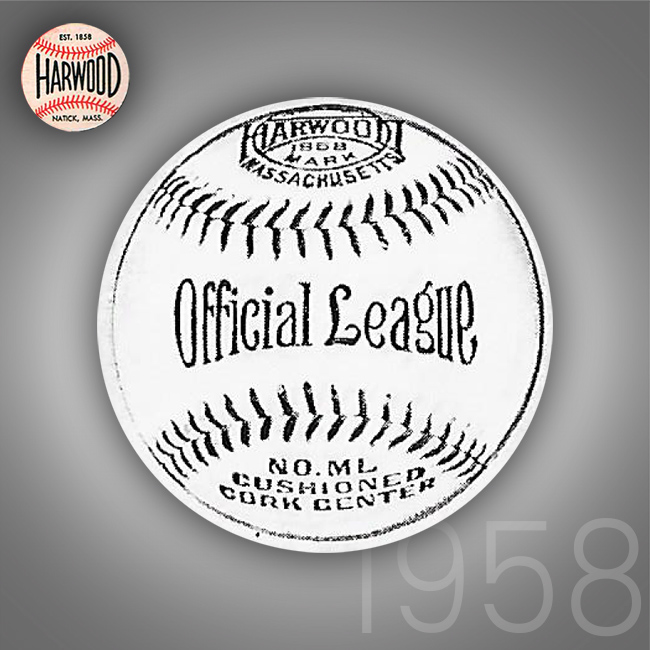The Harwood & Sons baseball factory of Natick Massachusetts was the first baseball manufacturing facilities in the USA. This location started making the Harwood Baseballs in 1858... Before Spalding and Reach.
Harwood Baseball and this website have no connections or relationships to the Harwood Surname or relations with the Harwood & Sons Baseball Factory.
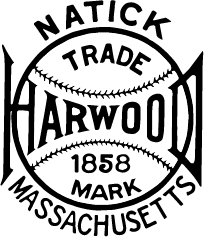

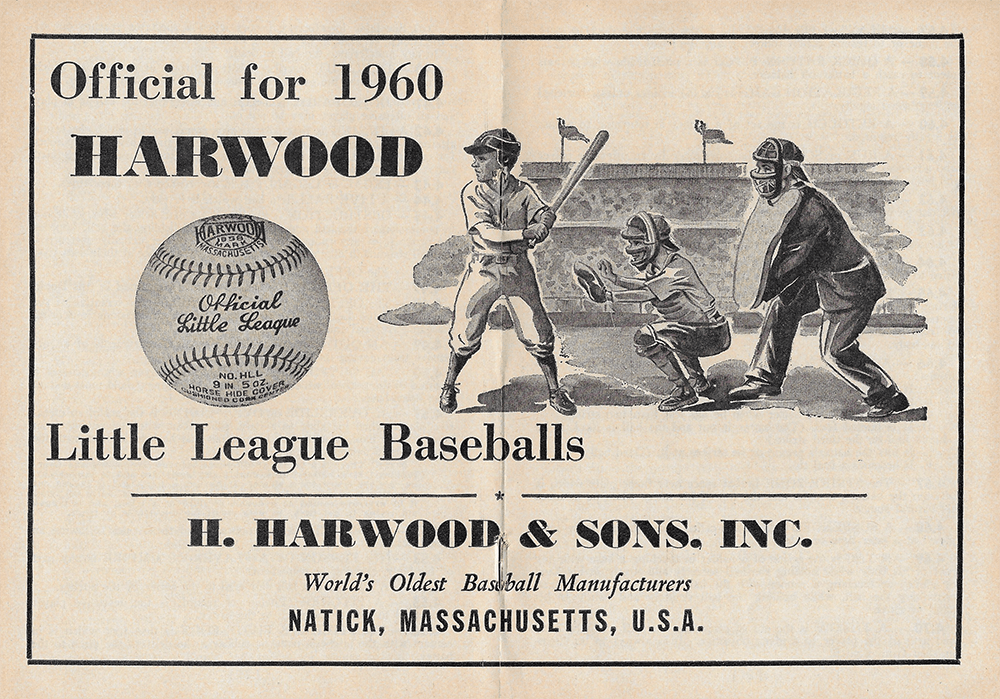
What do all those labels mean?
Below is a list of Harwood labels from 1958. These labels were used to identify the different type of baseball which they produced and sold.
Official Harwood Baseball Labels
No. CC
Cushioned Cork
No. ON
Original National League Ball
No. ON-C
Original National League with Cushioned Cork Center
No. ML
Major League
No. AAA
AAA League Specifications. All Wool Yarn for Semi Pro and College Play
Harwood Little League Baseball Labels
No. HLL
Official Little League
No. LLA
Approved Little League
No. LLS
Little League Senior
No. HLBL
Babe Ruth League Play
No. HPL
Pony League
No. HCL
Colt League
No. LBL
Dixie Boys Play
No. LBL
Dixie Youth Play
Misc. Harwood Baseball Labels
No. 1X
Practice Ball
No. 58
Cushioned Cork center wool yarn wound for college and high school play.
No. 90
Extra durable molded cork and rubber center. Horsehide cover
No. 94
Official size and weight for High School and Intermediate League Play. Moderately Priced.
No. 100-SN
Tuff Hide
Ironically...
We have found Harwood Official League balls with a label of No. AA. We are assuming these means AA Minor League Baseball but to this day we do not have proof.
What is in the core of a baseball?
Cork - Rubber - Stone - Marble
Baseball Cores
1800's
Rubber cores were made from melted shoes, wrapped in yarn and leather.
1840s, players crafted homemade hardballs by wrapping small objects; rocks, walnuts and even fish eyes. They would wrap these with yarn before stitching a piece of leather around the orbs.
National Association of Base Ball Players adopted rules in 1858 that required baseballs to have rubber cores covered with yarn and leather. Weight, size and rubber percentage however, were not governed allowing home teams to tailor them to the strengths of their teams.
1840s, players crafted homemade hardballs by wrapping small objects; rocks, walnuts and even fish eyes. They would wrap these with yarn before stitching a piece of leather around the orbs.
National Association of Base Ball Players adopted rules in 1858 that required baseballs to have rubber cores covered with yarn and leather. Weight, size and rubber percentage however, were not governed allowing home teams to tailor them to the strengths of their teams.
1901-1910
1901 to 1910 Major League Baseball used a Rubber Core Baseball.
Rubber remained the primary core of the baseball until 1910 when the A.J. Reach & Company began production of a ball with a center of cork encased in a layer of vulcanized rubber that was patented the year before by Ben Shibe, owner of the Philadelphia Athletics.
This was the beginning of the Dead Ball era (1901-1919). During the fall classic of 1910 a baseball with a center cork was introduced.
Rubber remained the primary core of the baseball until 1910 when the A.J. Reach & Company began production of a ball with a center of cork encased in a layer of vulcanized rubber that was patented the year before by Ben Shibe, owner of the Philadelphia Athletics.
This was the beginning of the Dead Ball era (1901-1919). During the fall classic of 1910 a baseball with a center cork was introduced.
1910-
During the fall classic of 1910 a baseball with a center cork was introduced. The American and National Leagues both adopted the cork-centered ball in 1911.
1922
Cushioned Cork
1931
Introduction of a Cushioned Cork Center.
1934
The National League and American League agreed to standardized the baseball. A cushion cork center; two wrappings of yarn; a special rubber cement coating; two more wrappings of yarn; and a horsehide cover.
1943
Natural rubber shell with less-elastic balata center core.
Japanese cut off rubber supplies at the onset of World War II. Four days after the 1941 bombing of Pearl Harbor, the United States banned the use of crude rubber in any items deemed non-essential to the war effort—including baseballs. The 1943 season was forced to replace the core’s natural rubber shell with less-elastic balata, the same substance used to make the hard outer shell of golf balls.
Japanese cut off rubber supplies at the onset of World War II. Four days after the 1941 bombing of Pearl Harbor, the United States banned the use of crude rubber in any items deemed non-essential to the war effort—including baseballs. The 1943 season was forced to replace the core’s natural rubber shell with less-elastic balata, the same substance used to make the hard outer shell of golf balls.
1944
Spalding introduced the Synthetic rubber core.
1946
Wartime restriction were uplifted and crude rubber returned to baseballs once again.
Baseball Leagues
When was the National League founded?
The National League was founded in 1876
Reach Baseballs
1901-1909
The word "Rubber" is stamped at the bottom panel.
1911-1912
Cork Center
1925
17,200
March 17, 1925 Patent No. 1,530,410 issued. Patent filed September 3, 1924.
March 17, 1925 Patent No. 1,530,410 issued. Patent filed September 3, 1924.
1927
Cushioned Cork
1929
Patent Reissued "Re 17200"



